The New Zealand Government has put forward a new law to legalise medicinal cannabis, create a medicinal cannabis access scheme, make access to CBD much easier by removing it from the list of controlled drugs, facilitate domestic production, and in the mean time allow a statutory defence for terminally ill people.
These are all good steps along the right path, even if we think the bill should go further in making safe and legal access to medicinal cannabis easier, quicker and more affordable. You can have your say by March 21st, 2018, by making a submission here.
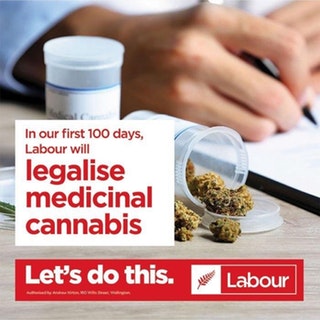

Polls show huge majorities supporting safe legal access to medicinal cannabis. Surveys of rates of use also show the biggest increase in use has been among seniors who are using cannabis for therapeutic reasons.
Our colleagues at the US National Council for Aging Care have produced this complete guide to medicinal cannabis for seniors. We thought this was worth posting here, as while the legal aspects in this article relate to the US, and it uses the term “marijuana” rather than our preferred botanical nomenclature of “cannabis”, the information about medicinal use, how to use, dosage, things you need to consider, etc, are just as relevant to New Zealand seniors and elders.
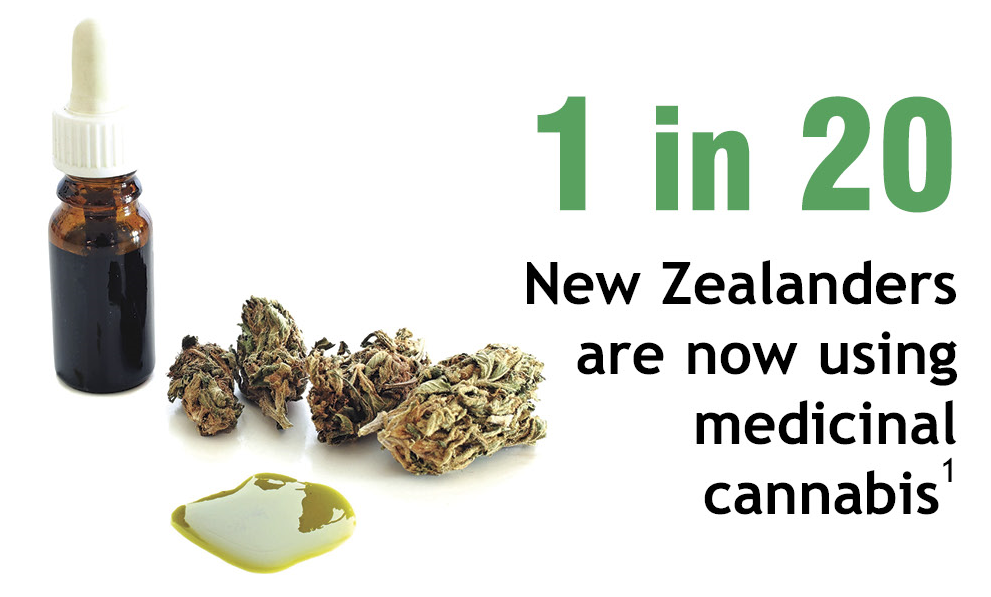
THE COMPLETE GUIDE TO MEDICAL MARIJUANA FOR SENIORS
By the National Council for Aging Care.
Marijuana has had a turbulent history in the United States. Starting in the mid-1990s, however, there was a push to introduce the medical benefits of cannabis to the American people once again—”once again,” because before the 20th century, marijuana was almost entirely legal.
Beginning in the 1910s, states began to ban the sale of marijuana, eventually leading to a bill called the Marijuana Tax Act in 1937, which decreased the amount of hemp (a version of a cannabis plant) allowed to be produced in the U.S. Later on in the century, the stigma around marijuana grew and Richard Nixon signed into law the Controlled Substances Act, which included marijuana on a list of federally banned drugs alongside heroin, cocaine, and other narcotics.
By the time the 1990s came along, though, states began adopting the medical benefits of marijuana, starting with California. About 15 years after that, marijuana itself—not just the medicinal qualities—became legal for recreational use in Washington and Colorado. As of 2017, 29 of 50 states have legalized some form of medical marijuana. A 2013 study revealed that four of five doctors approve of medical marijuana and that more than 90 percent of medical marijuana patients (of around 7,500 surveyed) say that medical marijuana has helped treat their conditions. Seniors were the largest age group in the study (more than 2,300 respondents).
With medical marijuana gaining prevalence and popularity in the medical world all over the U.S., let’s look at exactly what it is.
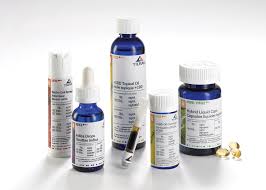
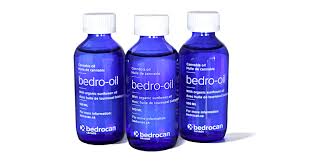
What Is Medical Marijuana?
Medical marijuana is not the drug you can buy in the street, which may be improperly grown, infused with another drug, or not even authentic marijuana.
Medical marijuana stems from pure, uncut cannabis indica plant. Certain medically beneficial chemicals—the “mind-altering” ones that make you feel a buzz or high—are then taken from these planets and used to help treat patients for various medical issues. Sometimes the plants as a whole—and not just the certain chemicals inside it—are used to help with certain medical conditions.
While there are more than 100 chemicals (these are called cannabinoids) in marijuana, the two main chemicals in medical marijuana used for medical purposes are delta-9-tetrahydrocannabinol (THC) and cannabidiol (CBD). These chemicals can help treat a slew of diseases and medical conditions, which we’ll discuss later.
How Can Medical Marijuana Help?
Medical marijuana has not been approved by the Federal Drug Administration yet, mainly because there have not been enough clinical trials done on a wide enough scale to prove the plant’s medical benefits. Just because a large government agency hasn’t approved medical marijuana as a proper medical treatment does not mean that the plant itself doesn’t have medical benefits, especially for seniors. Cannabis has actually been used as a medical treatment for thousands of years
Now that we know what medical marijuana is, we can look at the symptoms and illnesses the chemicals inside of the marijuana plants can help qualm or make easier to live with.
Cancer
One of the primary uses of medical marijuana is to help cancer patients, especially when they are going through rounds of chemotherapy. Some studies have shown that smoking marijuana can help with nausea and vomiting in chemotherapy patients. When dealing with palliative care, especially for patients with cancer, a study points out that most patients (more than 60 percent) experience both of these symptoms rather than one or the other, so medical marijuana can help relieve two symptoms (and potentially many more) at once. Studies have also shown smoked or vaporized marijuana can help with the pain suffered through neurological damage and can help patients get their eating habits back on schedule.
In terms of cancer treatment, there have only been two THC-infused oral pills that have been approved by the FDA for federal use: Marinol and Cesamet. These have been prescribed to help cancer patients with nausea.
Studies are ongoing in both animals and humans to see how medical marijuana can help treat tumors as well as the symptoms and illness that come with cancer.
Alzheimer’s Disease
Patients with Alzheimer’s Disease have sometimes turned to medical marijuana to help with their treatment to assist with symptoms of depression and loss of appetite that may come along with the degenerative brain disease, which affects more than four million Americans’ cognition and memory every year. About 10 percent of seniors have the disease.
In 2014, there was a preclinical study published in the Journal of Alzheimer’s Diseasethat analyzed the “potential therapeutic effects of THC” on the disease.” Researchers introduced THC to beta-amyloids, which are clumps of proteins that build up on the brain and are one of the leading signs of the presence of Alzheimer’s. They found that THC helped slow the advancement of these beta-amyloids, and the results from the study “strongly suggest that THC could be a potential therapeutic treatment option for Alzheimer’s disease through multiple functions and pathways.”
General Pain
Almost all seniors have experienced some sort of pain in their later years, and medical marijuana can help with that. What’s interesting is that you often don’t need to ingest the marijuana to reap the medical benefits of the plant. There are rubs, creams, and lotions infused with THC that can seep through your skin and attack a small, singular area of pain.
“There is increasing evidence that cannabis is helpful in the management of certain kinds of pain,” said Dr. Igor Grant, a professor in the Department of Psychiatry at the University of California, San Diego.
Medical marijuana, whether it’s smoked, consumed, or applied through a topical treatment, can help relieve acute and chronic pain by attacking the already-present cannabinoid receptors in our body. It helps relieve pain from:
- Joint pain, like arthritis
- Nerve damage
- Chronic illness, like cancer
Despite taking up less than 15 percent of the population, seniors are prescribed more than one-third of all prescription drugs in America, and the drugs are often used to treat pain. Medical marijuana is a convenient and healthier alternative, and strays away from the addictive tendencies of opioids.
Anxiety/Mental Health Disorders
Studies have shown that cannabinol (CBD), one of the two main chemicals in marijuana used for medical purposes, can help treat anxiety and other mental health issues, including:
- Obsessive compulsive disorder (OCD)
- Post-traumatic stress disorder (PTSD)
- Panic attacks
- Moderate depression
- General anxiety
Essentially, these studies (conducted in animals, to this point) found that CBD helps stimulate serotonin receptors in the brain, which is the main goal of other anti-anxiety medications like Zoloft. Medical marijuana has been proven to be far less addictive and to actually help counteract addictions to other prescription drugs.
While using medical marijuana to treat anxiety may help for some, others have reported anxiety as a side effects of using it. As Harvard’s health department points out, about 20 to 30 percent of recreational users say smoking marijuana causes anxiety or panic attacks after smoking. It’s important to stay in touch with your doctor once trying medical marijuana as a treatment in case it has adverse effects as planned.
Included in mental health is addiction. Analysis on studies by the National Institute for Drug Abuse show that the presence of legal marijuana laws and marijuana dispensaries show a link between:
- Fewer deaths caused by prescription opioids
- Less treatment for opioid addiction
- General prescribing of opioids
- A reduced number of people self-reporting opioid misuse
Many of these links have been chalked up to doctors prescribing far less harmful medical marijuana than addictive painkillers and antidepressants.
Eating Disorders
Eating disorders are far more common among seniors than you think. Nearly 80 percent of deaths that occur due to anorexia occur among the elderly.
As seniors age, they may lose the desire to eat. This can happen because they’re making a personal decision about their body image or because of other psychological reasons beyond their control. Poor eating, amidst other issues like bone loss and heart problems, can prove chronic. But in any instance, medical marijuana may help seniors eat more and exit dangerous weight zones.
Studies have found that the body’s marijuana-like neurological system called the endocannabinoid system is underutilized or impaired amongst patients with anorexia and bulimia, essentially making the brain look at food as undesirable. Medical marijuana can help stimulate this system and help the brain treat food as a reward again.
Eating disorders are often treated with antidepressants and antipsychotics, but patients often report their symptoms worsening after taking them. Additionally, many national psychotic and eating disorder foundations and associations have yet to list medical marijuana as a treatment for eating disorders. However, many doctors view medical marijuana as a safer alternative view medical marijuana as a safer alternative to prescription drugs with far less risky side effects.
Glaucoma
Glaucoma is an issue with your eyes that occurs when a buildup of fluid damages the nerves in your eyeball. It is the leading cause of blindness for people over the age of 60. This disease causes increasing pressure in your eyes because of the amount of fluid, which affects your eyesight. For years, doctors have prescribed glaucoma eye drops that help relieve the pressure in your eyes, but it has also been proven that marijuana can help relieve pressure for hours at a time.
According to a website dedicated to Oregon eye doctors (where medical marijuana is legal), you need to relieve pressure in your eyes throughout the entire day to help combat glaucoma, which is why eye drops can sometimes be more effective. Other factors that play into using medical marijuana instead of glaucoma drops include cost effectiveness and personal preference.
How Can Medical Marijuana Boost The Brain?
We have looked at all the benefits medical marijuana can have when it comes to treating diseases, conditions, and mental illnesses, but it can also positively affect the brain functions in the elderly.
A study done at the University of Bonn in Germany looked at the how small doses of THC affected the brain cognition in mice that were young, mature, and elderly. As it often does in younger humans, THC inhibited the cognition in young mice slightly. But with the introduction of THC, the two older groups of mice performed better on cognitive tests than younger mice who were also introduced to THC. Before the introduction of THC, the older generations of mice performed significantly worse on the tests.
While this study is obviously not generalized for humans just yet, it is an intriguing building block when it comes to looking at medical marijuana helping increase the cognition in the elderly—something that often declines severely as people age. The next step is seeing how our internal cannabinoid system reacts to THC and how that introduction can help re-stimulate cognition, the study’s leading researcher, Andreas Zimmer, said.
“The idea is that as animals grow old, similar to in humans, the activity of the endogenous cannabinoid system goes down—and that coincides with signs of aging in the brain,” Zimmer said. “So we thought, ‘What if we stimulate the system by supplying [externally produced] cannabinoids?’”
Because cannabis is not considered a class A or dangerous drug in Germany, researchers are able to gain funding from the government to test the effect of THC on cognition in humans, which Zimmer plans on starting soon.
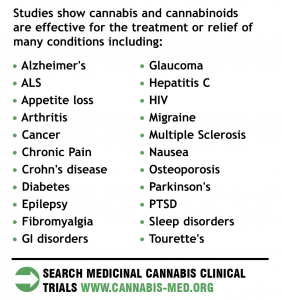
Why Seniors Are Turning To Medical Marijuana
The trend among seniors using medical marijuana is on the up-and-up. From 2006 to 2013, cannabis use among seniors increased by 250 percent.
We’ve discussed the many reasons why medical marijuana can be beneficial to seniors because of their health. But let’s take a look at a several more reasons why seniors are turning toward medical marijuana:
- It’s safer and more cost efficient: As we’ve discussed in previous sections, medical marijuana is often a safer alternative to many prescription drugs like opioids and antipsychotics, and has with far fewer severe side effects. It can also be more cost efficient, too. A senior spends on average close to $3,000 per year on prescription drugs alone. Contrast that with the national average of how much a person spends on medical marijuana per year—about $650—and you have a more cost-effective option, too.
- Why not try it?: Some seniors have pain so severe that over-the-counter drugs and prescription medications can’t always cure their maladies. So sometimes they turn to medical marijuana out of desperation and find positive results. A woman named Reba Goodman reached this point of pain that was so severe, she stopped resisting marijuana. “It was just heaven,” she said of her pain relief, noting that she stopped using marijuana once the pain went away for good but that she could easily pick it up again if need be.
- Helps with sleep: Some seniors have found medical marijuana to be a viable alternative for sleeping pills, which sometimes don’t work at all. Kerry Stiles, a 78-year-old nursing home resident who wears a pacemaker, says he places droplets of cannabis under tongue before he goes to bed, and he says it helps him sleep. The same goes for 95-year-old Alice, who experienced insomnia before turning to medical marijuana.
How Do You Consume Medical Marijuana?
There is not one specific way to intake the benefits of medical marijuana. Depending on your medical needs, budget, and your physical abilities, you may prefer one method over another. Let’s take a look at some ways you can consume medical marijuana.
- Smoke it: Smoking marijuana provides some of the most instant relief when it comes to extracting the medical benefits from the plant. There are several ways to smoke marijuana, including through a smaller handheld pipe or device, a water bong (a pipe with a long neck), or a joint (where you use rolling papers). Smoking is typically the cheapest option, too, considering you only need to acquire a single smoking device or inexpensive rolling papers.
- Consume it: Medical marijuana can be infused into foods and drinks to help ease the process of consumption. Essentially, the THC just needs to be extracted from the marijuana, then mixed in with whatever food or drink you want (commonly brownies, smoothies, cookies, etc.). Consuming marijuana usually takes longer to take effect, and even a small increase in dosage can have massive effects on how you feel once they kick in, so be careful with self-dosing. The edible and drinks business is becoming an increasingly popular option. Forbes reports that more $180 million worth of marijuana-infused foods and drinks were sold in California alone in 2016.
- Vaporize it: Similar to smoking, vaporizing marijuana into a mist provides more instant results. For this method, you put a small amount of cannabis inside a machine called a “vaporizer,” which turns the heated cannabis into a vapor that isn’t as hot as smoke but still hot enough to extract the medical benefits. The devices used for vaporizing are usually far more expensive than ones for smoking, but the vapor is usually far less harsh on your lungs.
- Rub it on your skin: Topical treatments like lotions and creams can help relieve maladies like muscle soreness and arthritis. Because they’re applied through the skin, topicals don’t give you the “high” often associated with cannabis. They also allow you to target one specific area of pain rather than inducing a full body effect for one localized area of pain.
- Use droplets: Using droplets or sprays can help you control the dosage you’re taking. You place the treatment underneath your tongue, letting the saliva and tissues absorb the THC. While not as immediate as smoking or vaporizing, using sprays is more cost effective, especially if you need smaller doses.
- Taken in pill form: It’s one of the least popular options, but there are suppositories and other cannabinoid medicines that are FDA-approved and help ease symptoms like nausea and vomiting.
Whatever method you choose to intake medical marijuana, it’s important you consult a medical professional about how much, when, and how often to use it.
Where Is Medical Marijuana Legal?
Though marijuana and its medical abilities are still banned and viewed as a Class A drug on a federal level, individual states have been given the right to legalize marijuana, both on a medical and recreational scale. While the Department of Justice announced under President Barack Obama’s administration that they were leaving the crackdown of the growth and sale of marijuana largely up to the states, there have been seizures and arrests made on dispensaries from the federal level.
As of October 2017, 29 out of 50 states have approved medical marijuana beyond the two FDA-approved cannabis drugs, Marinol and Cesamet. These states include (ones in bold also allow it recreationally):
- Alaska
- Arizona
- Arkansas
- California
- Colorado
- Connecticut
- Delaware
- Florida
- Hawaii
- Illinois
- Maine
- Maryland
- Massachusetts
- Michigan
- Minnesota
- Montana
- Nevada
- New Hampshire
- New Jersey
- New Mexico
- New York
- North Dakota
- Ohio
- Oregon
- Pennsylvania
- Rhode Island
- Vermont
- Washington
- West Virginia
Washington, D.C. has also approved medical marijuana.
States have varying laws for how much you are allowed to possess on your person at one time, how much you are allowed to personally grow, and what conditions are recognized as being helped by medical marijuana. To find out more information on your state’s laws on medical marijuana, visit the National Conference of State Legislatures website.
Note: The information in this article is provided for informational purposes only by the National Council For Aging Care. Any links to third-party websites do not represent an endorsement by the NCAC and are solely to cite research, studies, and data.
MORE INFORMATION
- Cannabis harm reduction – safer use
- New Zealand Health Survey 2012/13: characteristics of medicinal cannabis users
- Cannabis Use 2012/13: New Zealand Health Survey
- NZ’s 540,000 cannabis users “too many to arrest”
- NORML, Peter Dunne and Family First agree on medicinal cannabis
- Read the Misuse of Drugs (Medicinal Cannabis) Amendment Bill
- Follow progress of the Bill through Parliament
- NORML’s guide to making an effective submission on the 2018 Medicinal Cannabis Bill
- NORML’s 4-point model for medicinal cannabis law reform
- What would Helen Kelly do?
- NZ Drug Foundation – Tell MPs you want improved access to medicinal cannabis



